Session 3: Creation IA—The Inanimate World

What did we learn from our first session? That myth was used to explain the origins of things—not in the sense of a creation, but rather a formation. Myth takes significant historical events—like a devastating flood—transfers them into sacred space and sacred time and populates them with sacred beings. That way, it gives universal significance or meaning to what started out as isolated experiences. In all cases, there’s a struggle. It’s the struggle of order versus chaos. Chaos is the ever-present monster threatening creation. The gods came into existence to challenge chaos and hold it at bay.

Last time, we looked at the situation in the ancient Near East—the Tigris-Euphrates Valley—where Western culture originated. We looked at three great civilizations: the Sumerians, the Akkadians, and the Babylonians, and we talked about some of the important cities in the area: Ur, Eridu, Uruk, and Shuppak in Sumer; Akkad, Nippur and Kish in Akkadia, and the great city of Babylon that eventually conquered them all.

We then took a quick look at some of the oldest literature in human history—over five thousand years old—and introduced some of the great names of the period: Ziusudra and Atra-Hasis, who were said to have been saved by the gods from a great flood, Gilgamesh, the hero-king of Uruk, and Marduk, the creator-god, hero, and slayer of Tiamat who became the patron of Akkad and Babylon. Then, we read the first few stanzas of the Enuma Elish, the Akkadian creation story, and saw some of its similarities with the opening chapter of Genesis.
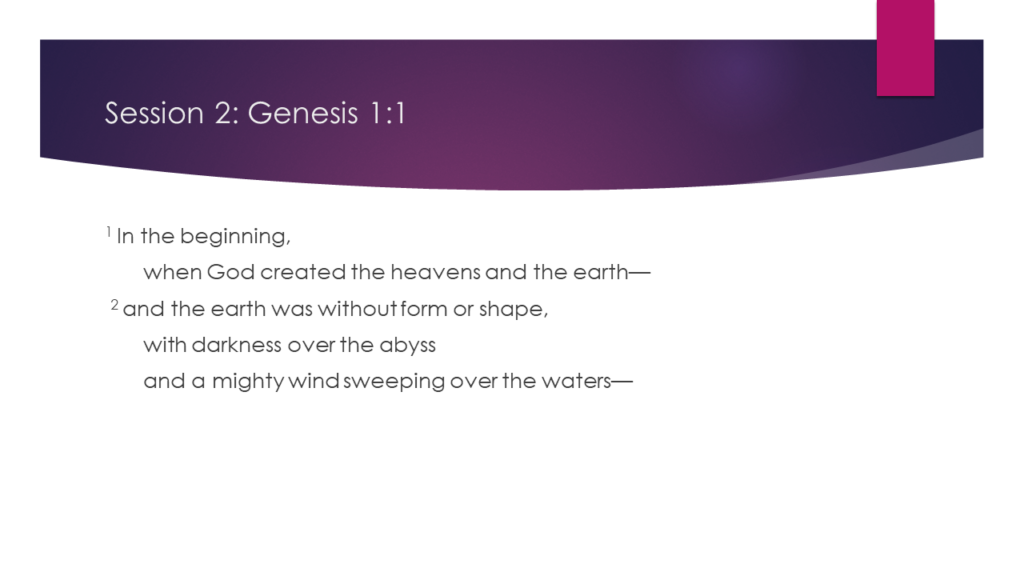
Finally, we looked at the first two verses from Genesis. We noted that the authors had demythologized the ancient stories but maintained many of the basic concepts: the formation of everything out of chaos, which was presented as primordial waters, and the ruaḥ—the divine wind, breath, or spirit. Now, before we charge ahead into verse three of Genesis, let’s take a look at the early history of Israel where the Book of Genesis was composed.
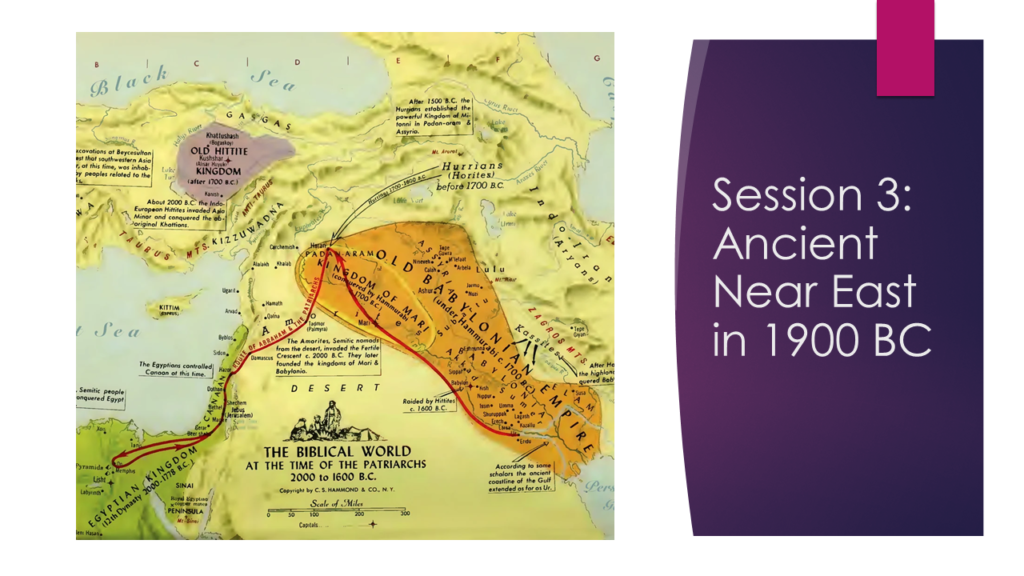
From what evidence we can gather, the first Hebrews, represented in the person of Abram, or Abraham, started their journey from the city of Ur in about 1900 BC. At that time, Mesopotamia was in chaos. The southern Tigris-Euphrates Valley was under a double siege: by the Amorites from the west and the Edomites from the east. The population fled far northward as far north as the city of Haran in the Amorite Kingdom of Mari.
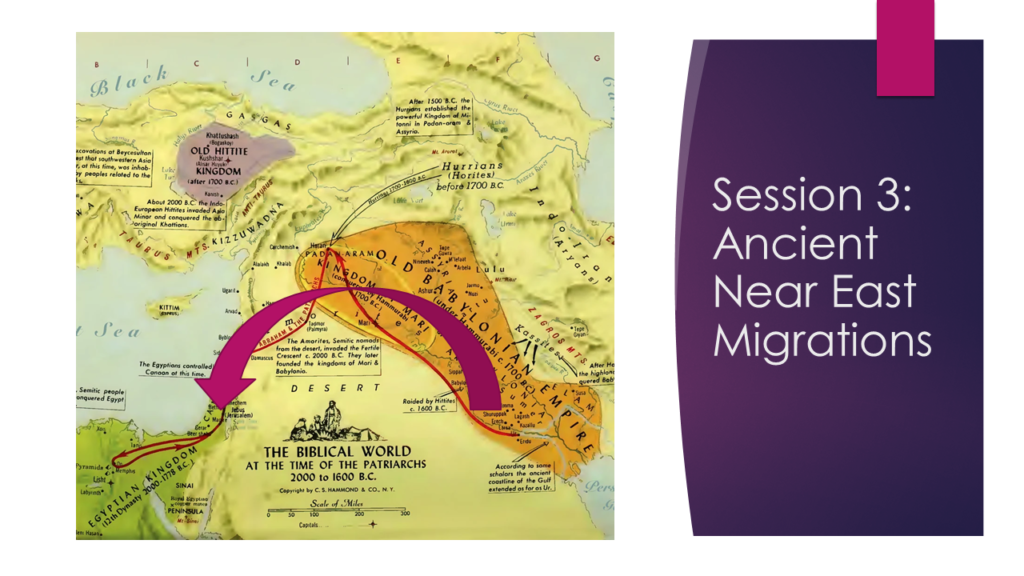
Meanwhile, the Hittites were moving into what is now Turkey, and that set off a southern migration down the coast into Egyptian territory which, at that time, included the land of Canaan. The invasions of both the southeast and northwest set up a great migration that included Abraham’s group. Even though the proto-Israelites camped out in Canaan, they did not attempt to conquer the territory.
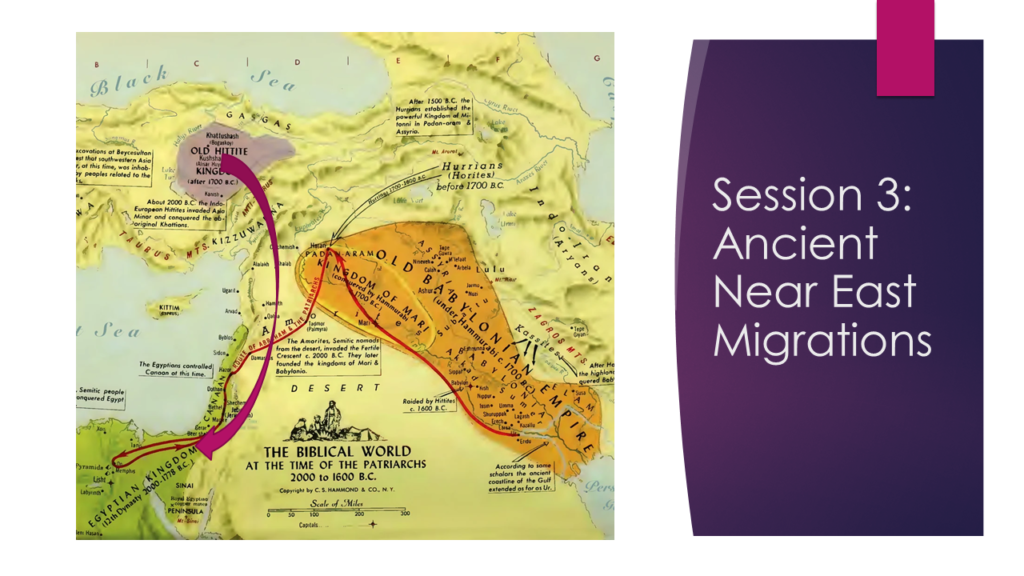
After about three generations, something (possibly a famine) energized the Hittites to move further south toward Egypt where there was water, grain, and wealth. The Israelites were caught up in this migration, too. The Hittites were successful in overrunning northern Egypt and installing Hittite pharaohs.
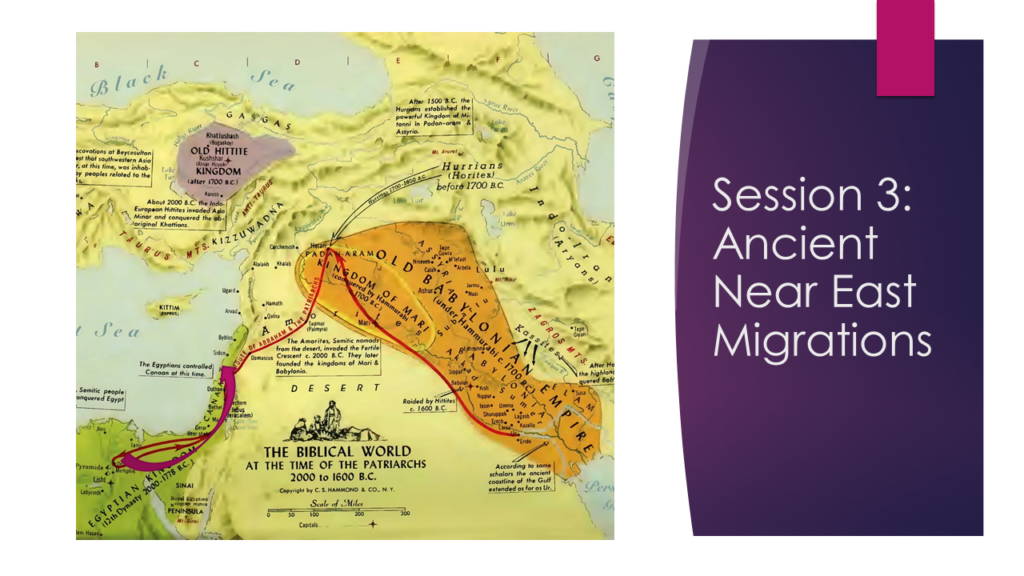
It took several hundreds of years for the Egyptians to expel the Hittite peoples (known as Hyksos) and restore the monarchy to native Egyptians. The Egyptians pushed the Semitic peoples out of Egypt, and they returned north to the land of Canaan. This might explain Moses and the Exodus.
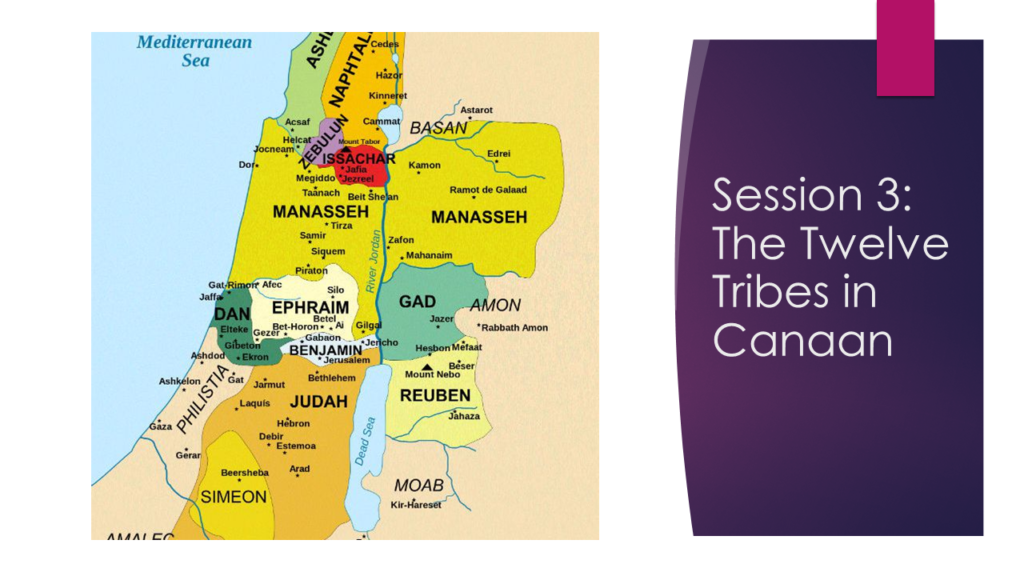
When the Israelites conquered and settled in the land of Canaan, they were not an organized political entity. They were a collection of independent tribes of nomadic sheepherders who only appointed leaders only when it became necessary. Each tribe claimed its own territory (except the tribe of Levi, whose members served as liturgical functionaries). The tribe of Joseph split into two half-tribes, Ephraim and Manasseh. The tribes eventually decided to anoint a king over them all and chose Saul from the tribe of Benjamin. He ruled from the city of Gibea which is located on the outskirts of Jerusalem. Saul was not successful in uniting the tribes. That fell to his successor, King David from Bethlehem in Judah. He moved his capitol to Jerusalem and brought the great relic of the Exodus—the Ark of the Covenant—into the city. His son, Solomon, finally succeeded in pacifying and ruling the entire kingdom.
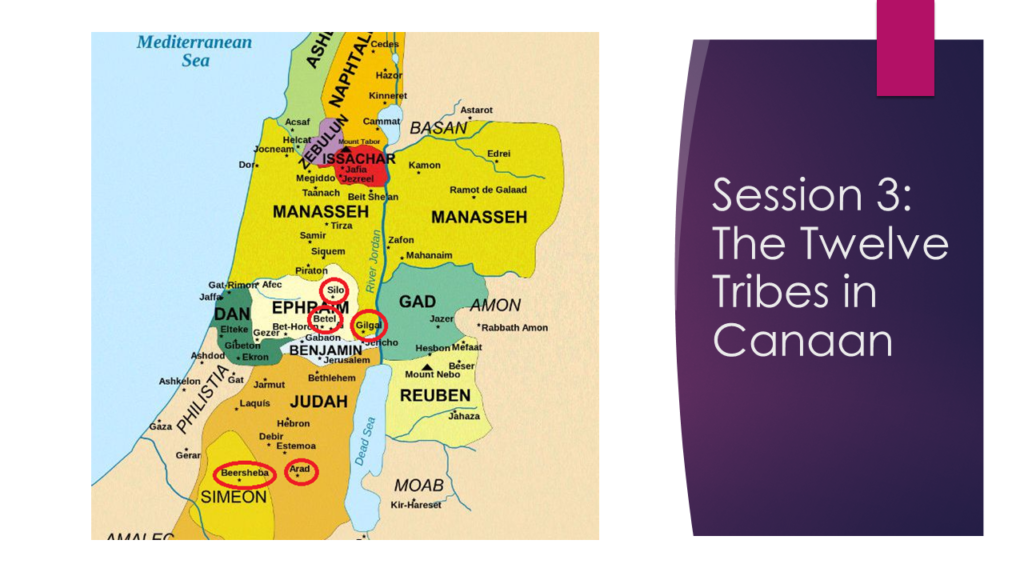
Solomon attempted to consolidate religious practice by building a temple in the king’s city, Jerusalem to house the Ark. Before that time, Yahweh God was worshiped in a variety of ways in a variety of places. Some of the main ones are circled in Red: Beersheba in Simeon, Arad in Judah, Bethel and Shilo in Ephraim and Gilgal in Manasseh. The sanctuaries outside of Jerusalem resisted the attempt to eclipse them, and cults continued to be practiced throughout the kingdom, sometimes with Yahweh being worshiped alongside local gods, and sometimes even employing idols—usually a bull. The religious authorities fought against these idolatrous practices for centuries.
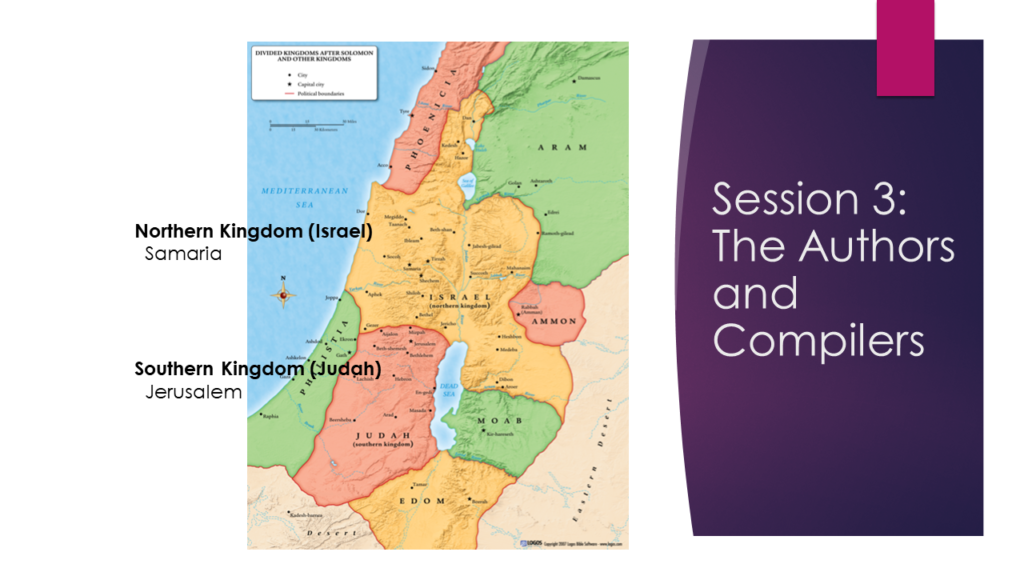
Unsurprisingly, when Solomon died, the kingdom fell into civil war and the northern tribes revolted. The nine rebellious tribes formed the Kingdom of Israel with its capitol at Samaria. The southern tribes, Judah, Benjamin and Simeon (which eventually disappeared into history) remained united in the Kingdom of Judah (later called Judea).
The first five books of the Bible—the so-called Pentateuch—make up the Torah, or the Law of Moses. As much as some folk would like you to believe otherwise, it did not spring fully formed from the hand of God. Nor was Moses the author. It had a long and diverse gestation period with contributions from many different sources and authors.
Most scholars agree that there were four or possibly five authors—or schools of authors—for the material that makes up the Torah. They lived in different time periods and different regions and had different perspectives and goals. We know this because, by studying the texts, we find differences in vocabulary and syntax, differences in style, and differences in theology.
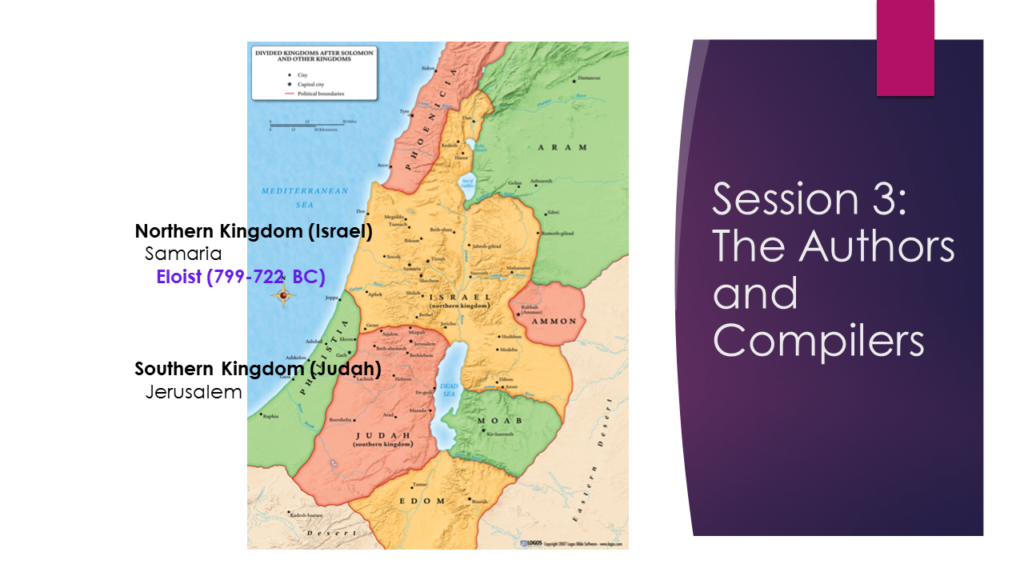
The oldest source is called the Elohist because it refused to use God’s proper name, Yahweh, in those texts that purported to be about the period before God revealed his name to Moses on Mount Sinai. Instead, this source always uses Elohim, meaning “God.” This source was composed and compiled around the eighth century BC in the Kingdom of Israel, the northern kingdom. The style of writing is rather bland and dry. It focuses on tribes other than Judah and on cities like Bethel and Shechem rather than on Jerusalem.
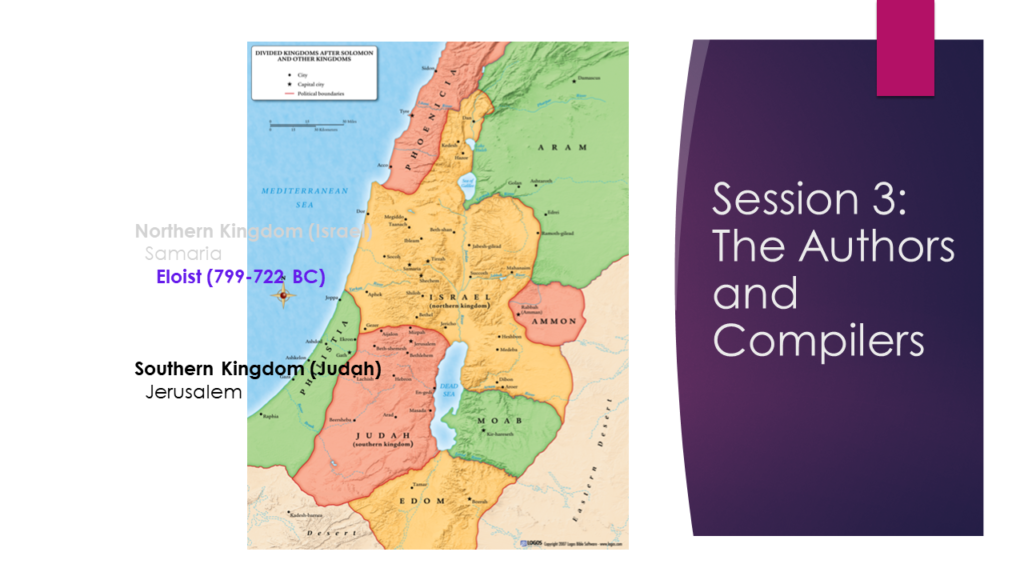
The Kingdom of Israel was invaded, conquered, and destroyed by the Assyrians in 722 BC. The Assyrians were very thorough conquerors. They not only installed their own governors, but they also deported large portions of the population to the far reaches of their conquered territories and settled other conquered peoples in what had been Israel. This mishmash of ethnic and religious populations formed what, in Jesus’s time, were known as the Samaritans, after the old capitol city of Samaria. The Elohist writings were carried with the exiles who escaped to Judah.
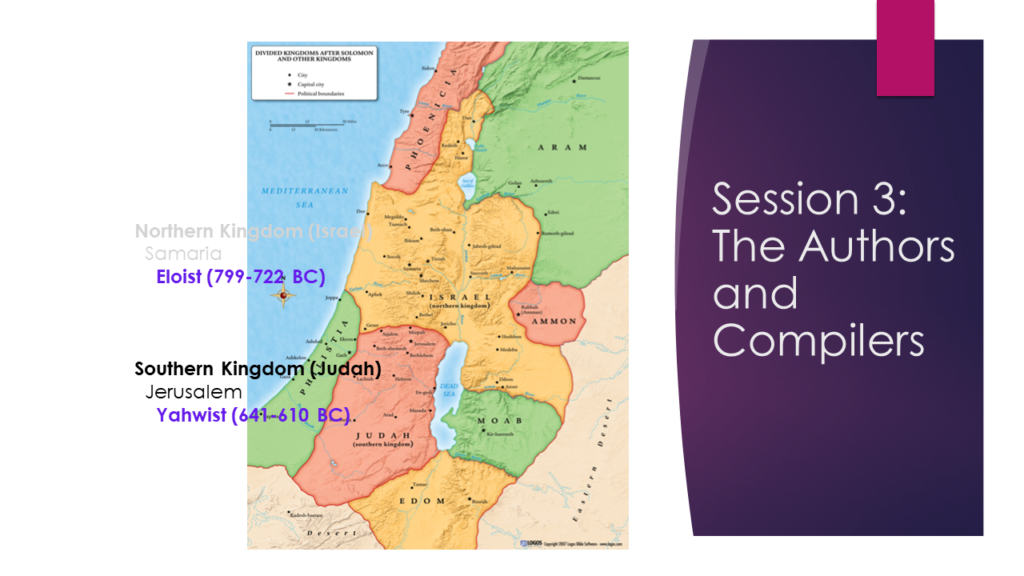
The next oldest source is called the Yahwist. This source was active in the seventh century BC in the Kingdom of Judah in the vicinity of Jerusalem, probably during the reign on the reformer-king, Josiah. This tradition nearly always uses the name Yahweh to refer to God, even using the name while describing events that occurred before Moses on Sinai. It even puts the name of Yahweh on the lips of pagans and enemies of Israel. Evidently, the Yahwist’s concern was mainly with the story of Judah and Jerusalem, and the unique position held by Solomon’s temple. Stylistically, the Yahwist is noted for its acute insights into human nature, and its effective storytelling.
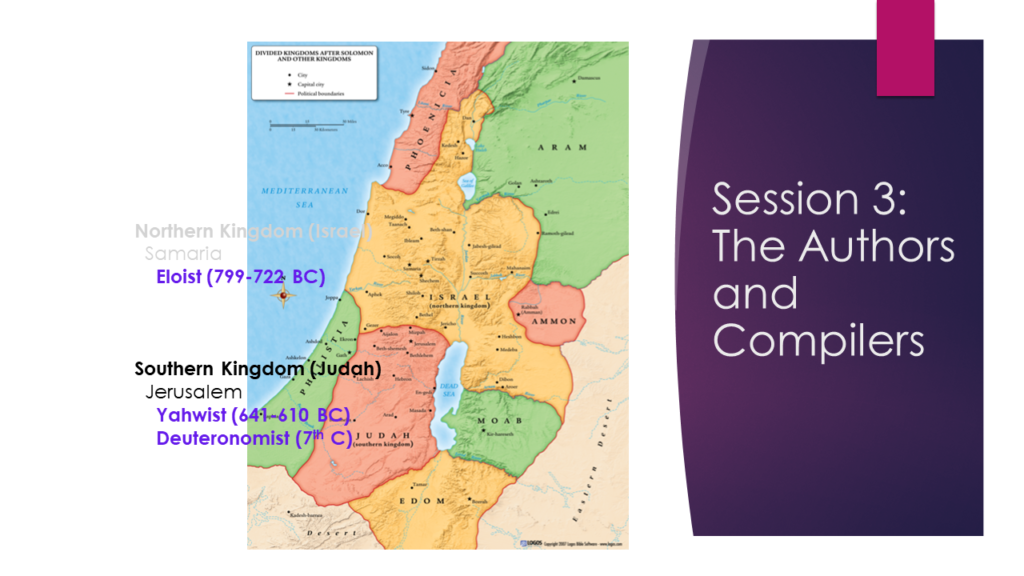
The third source is called the Deuteronomist and is credited with the authorship of the entire Book of Deuteronomy, which is unlike the other four books of the Torah. It’s roughly contemporary with the Yahwist from the seventh century. It is principally concerned with the events leading up to the establishment of the covenant, the covenant Law itself, and the blessings and curses relating to the covenant.
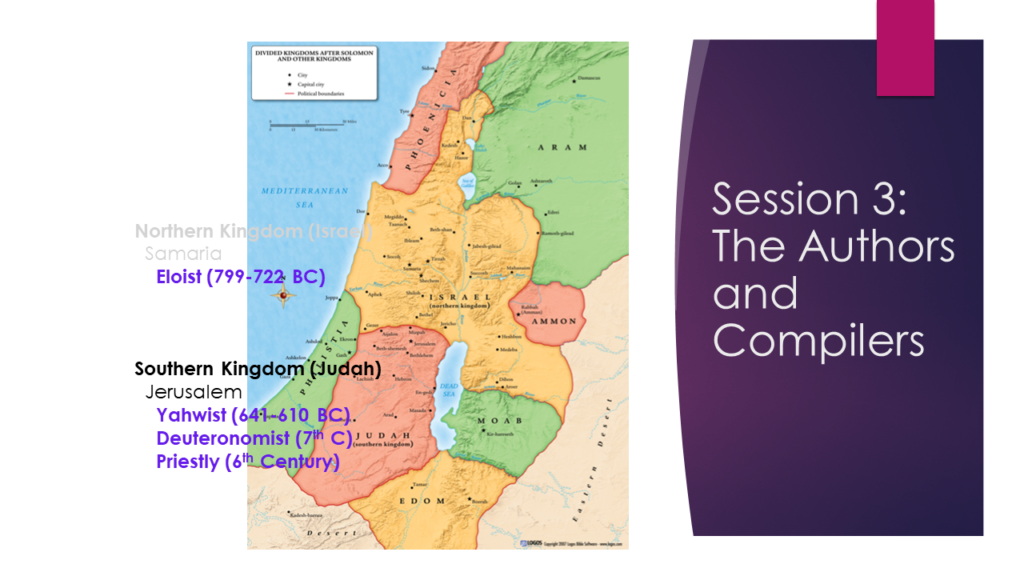
The latest of the generally recognized sources is called the Priestly Tradition. It dates from early in the sixth century BC when the Israelite leadership and intelligentsia returned to Jerusalem from exile in Babylon. It was composed by people of the priestly caste. Their concern was reestablishing orthodox Jewish belief and practices in the newly restored Jerusalem. They were concerned with orthodoxy of belief, ritual purity and liturgical practices relating to temple worship and sacrifices. Like most ancient cultures, the members of the priestly caste were the scientists of their age. Therefore, their writings are notable for their structure and precision.

Some think that there may be a fifth source, called the Redactor. There are signs that pieces of the Torah have been edited and moved around, but, if so, the Redactor didn’t add any new material. He also didn’t take anything out, so he made no effort to correct the many inconsistencies and contradictions we find in the Pentateuch. As a result, in the Book of Genesis, we’ll find evidence of divergent writing styles and ideas, mainly from the Yahwist and Priestly traditions, with a smattering of Elohist added to the mix. Now that you know how the Pentateuch came about, we can take a look at it. We’ll find that the first chapter of Genesis is both scientific and highly structured. It’s evidently the product of the Priestly tradition.
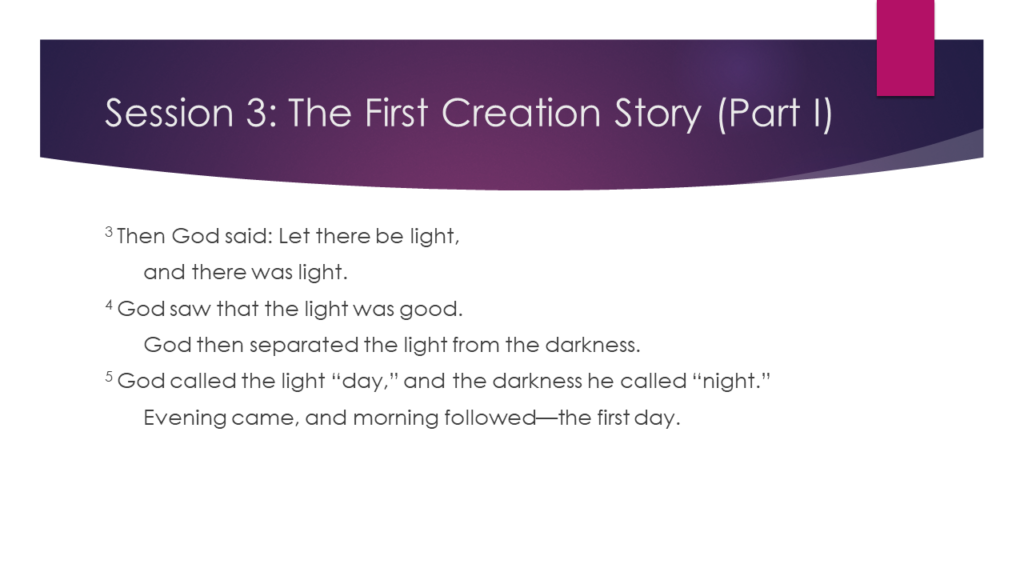
In this first creation story, light itself is a thing. The reason it comes first is scientifically obvious: God needed light to work by. Remember that the term “create” in Genesis doesn’t mean create from nothing. It means to form into being out of chaos. Also, we saw in the Enuma Elish that, if a thing has no name, it doesn’t exist. Let’s talk about that. In Hebrew, the word for “thing” and the word for “word” are the same word: דבר (dabar). To name something, or even to speak its name—to utter its “word”—exercises power over it. God doesn’t use tools. There’s no thunder and lightning or swords. He creates by the power of his word alone. So, in forming light, darkness is formed, as well; then God gives them both names: “day” and “night.” Now, they exist. And, for the first time in recorded history, what was created first were things, not gods. We take this for granted, but it was unheard of in the history of the ancient Near East before then.
This passage ends with nightfall: the first day. What is this “day” thing that was just created. We’re in sacred space and time. There is no “where” or “when” here. “Day” in the creation story is simply a marker, a delimiter. The story has structure—it’s Priestly. The structure is indicated by these markers called “days.” This is the first one.
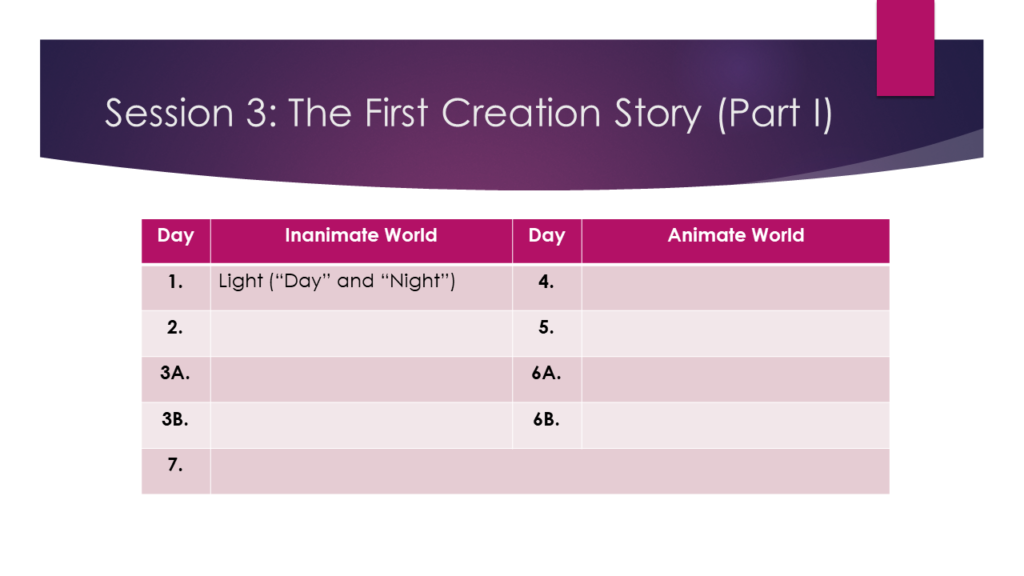
This is what the structure of our creation story looks like in spreadsheet form. As we move along, we’ll fill in the blanks so that you’ll be able to see the genius of the Priestly composition. Now, we’ll move on.
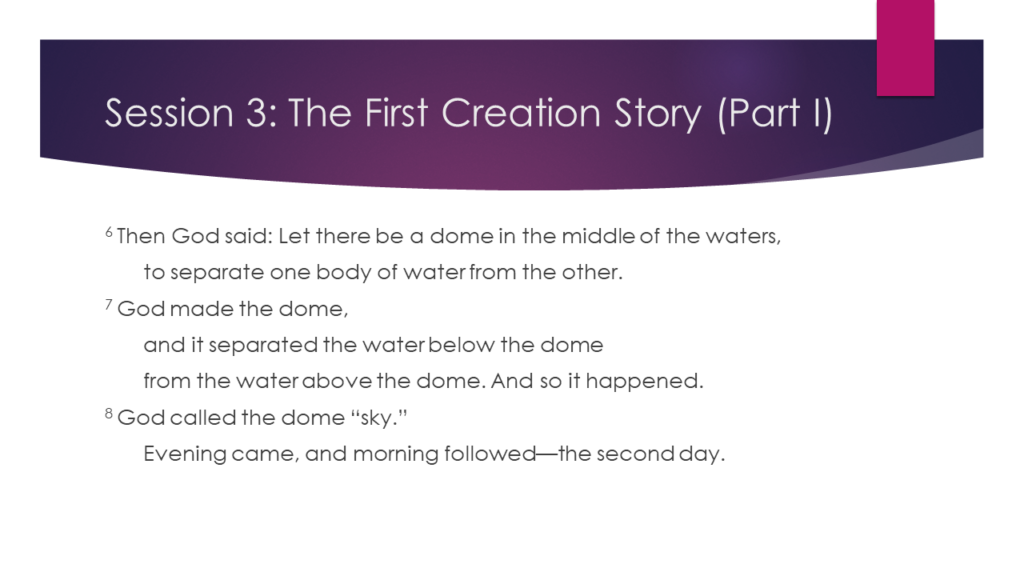
God separates the primaeval waters into two. The waters are no longer Tiamat. There is no battle nor any slaying of the primordial being. There’s just a dome or firmament introduced to separate the primordial waters below from those above. How do we know there’s water above? Because it falls down on us. It rains. If it comes down, it had to have been up there. It’s primitive science, but science, nonetheless. It’s not a god. Once again, God names the dome “sky,” and so it exists.
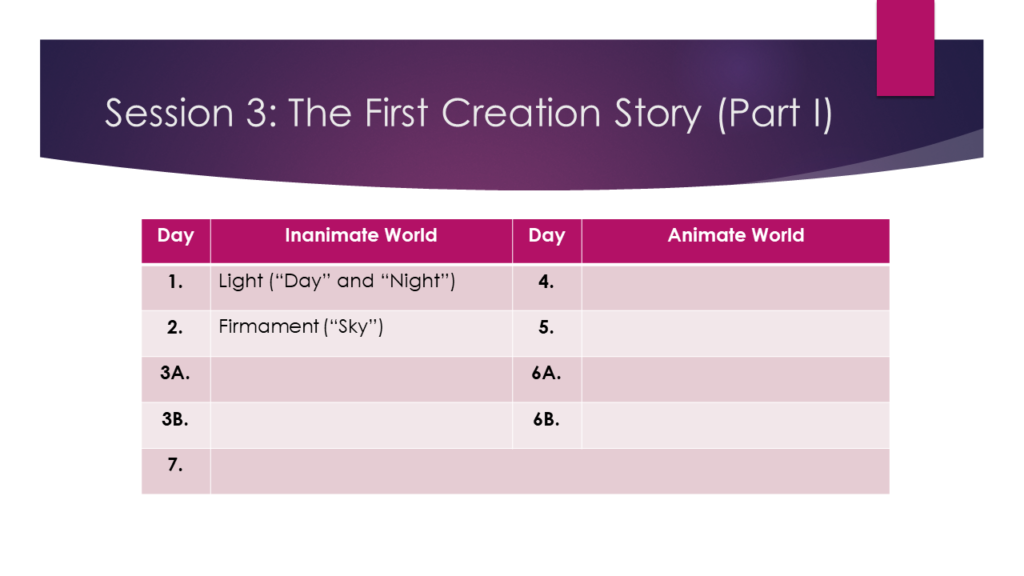
Marker two: “sky” separates the primordial waters.

God gathers the waters under the sky. He gathers them, not creates them. The dry land appears. Where was it? It was hidden within the primordial waters of the abyss. It was lost in chaos until God gave it form. Under the power of God’s word, the waters yield up the land. God called the dry land “earth” and the basin of water he called “sea.” Only then does the sea exist. Here we are, on the third “day” dealing with the primordial waters and yet, up until now, they had no existence, no form, no reality, no name.
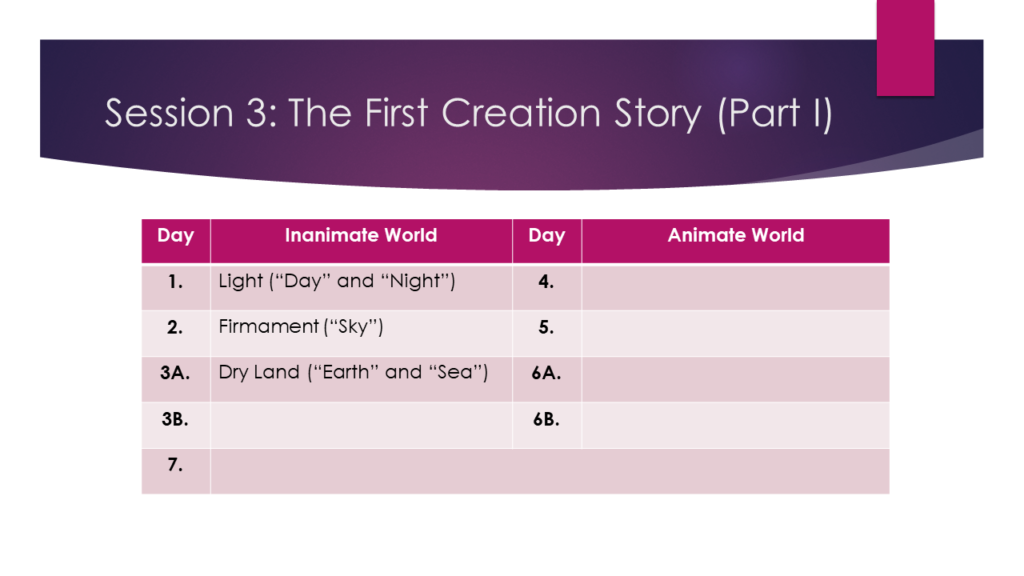
Here’s our marker for the third day. And now, God evaluates what he has formed. He calls it “good.” He gives it value. We might think we’re ready for the end of the third day…but wait!
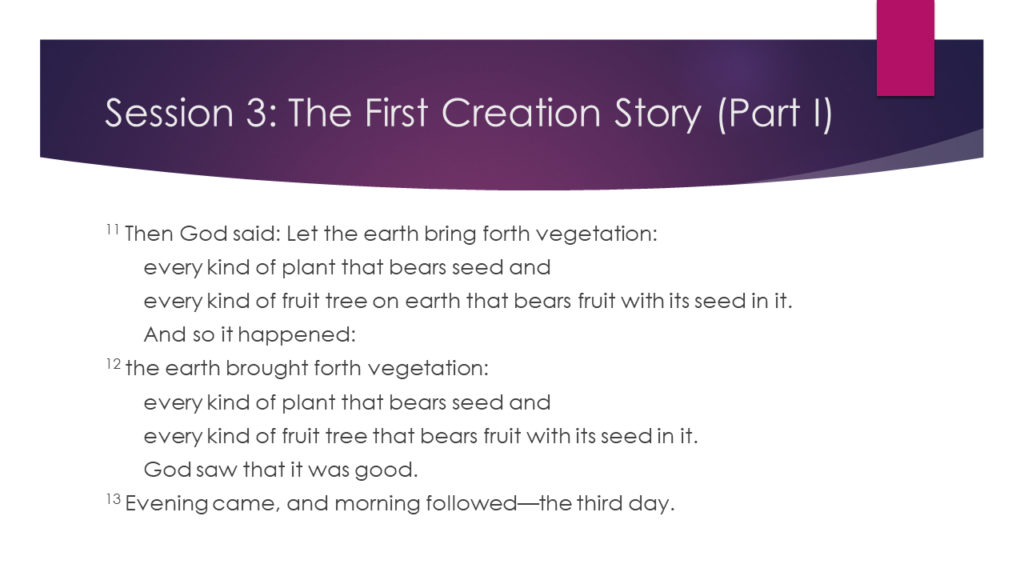
Something else entirely forms from the earth! At the word of God, the earth brings forth plants and trees. There are two things that make plants and trees special, and why they’re added as an addendum onto the third day. The first special feature is that they’re quasi-alive, but not fully. For our Priestly scientists, things needed breath, blood, and mobility to be really alive. Plants and trees didn’t observably breathe. They moved…sort of. They had sap, but not blood. So, they weren’t fully alive. Yet, they weren’t like rocks and sand. They were special. The second feature of plants and trees involved reproduction. They dropped seeds and made new ones. Rocks didn’t do that, either. God also called these things “good.”
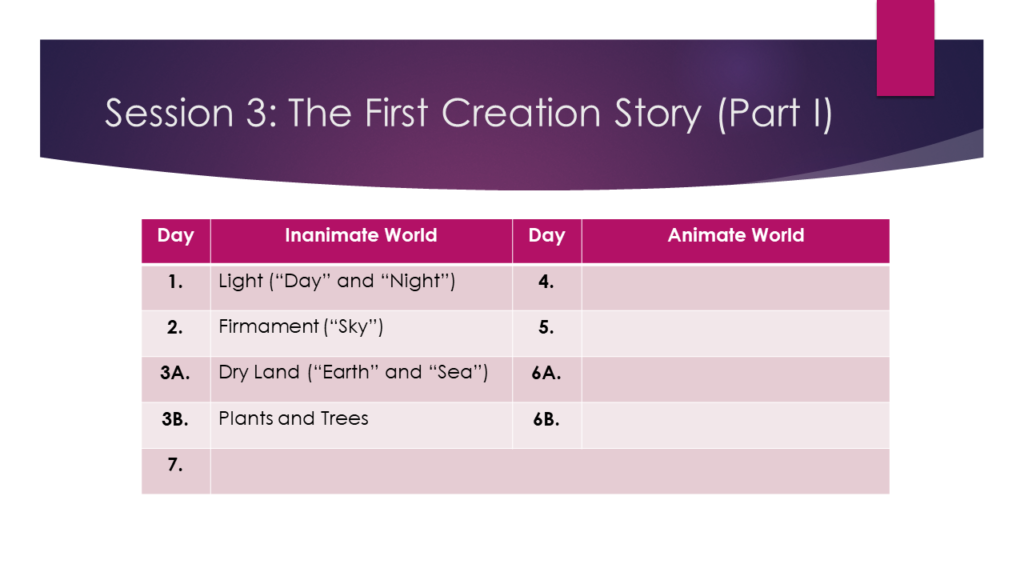
Now, we’re ready for our marker. Notice that nothing so far created was really alive. So far, we have only the formation of the inanimate world…with one quasi-exception for plants and trees.
Once again, I want to stress that this is all happening naturally and in good order. There are no gods of creation, no gods of fertility, no gods of the sky or sea or anything. There are no battles. Chaos is not the enemy here. It’s the unformed raw material that God forms from no-thing into some-thing by calling it into being by the power of his word alone.
Next time, we’re going to fill out the rest of our spreadsheet. We’re going to look at the formation of the animate universe, and the unique seventh day. Thanks for following along. I hope this has answered more questions than you thought you’d had!
